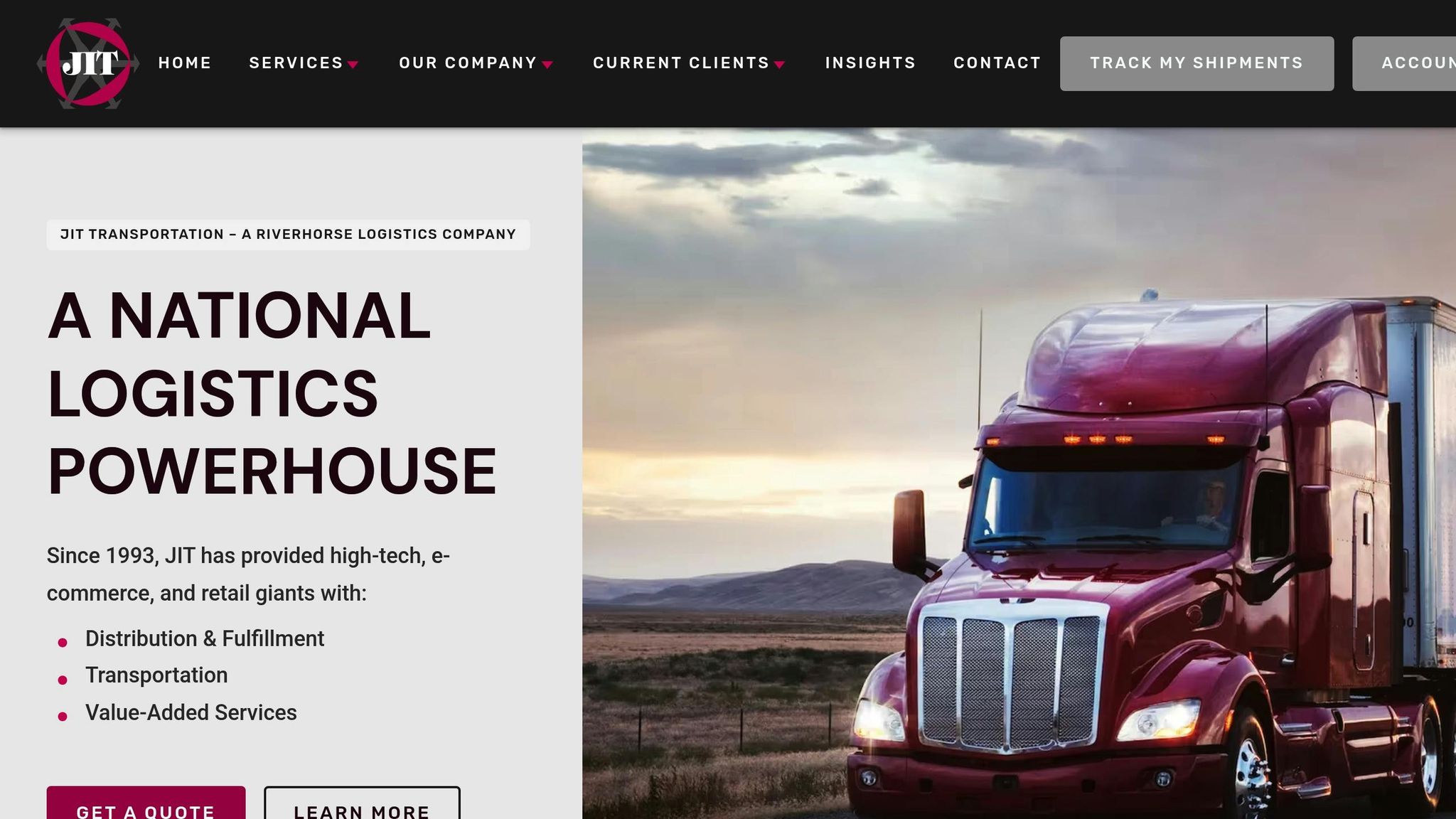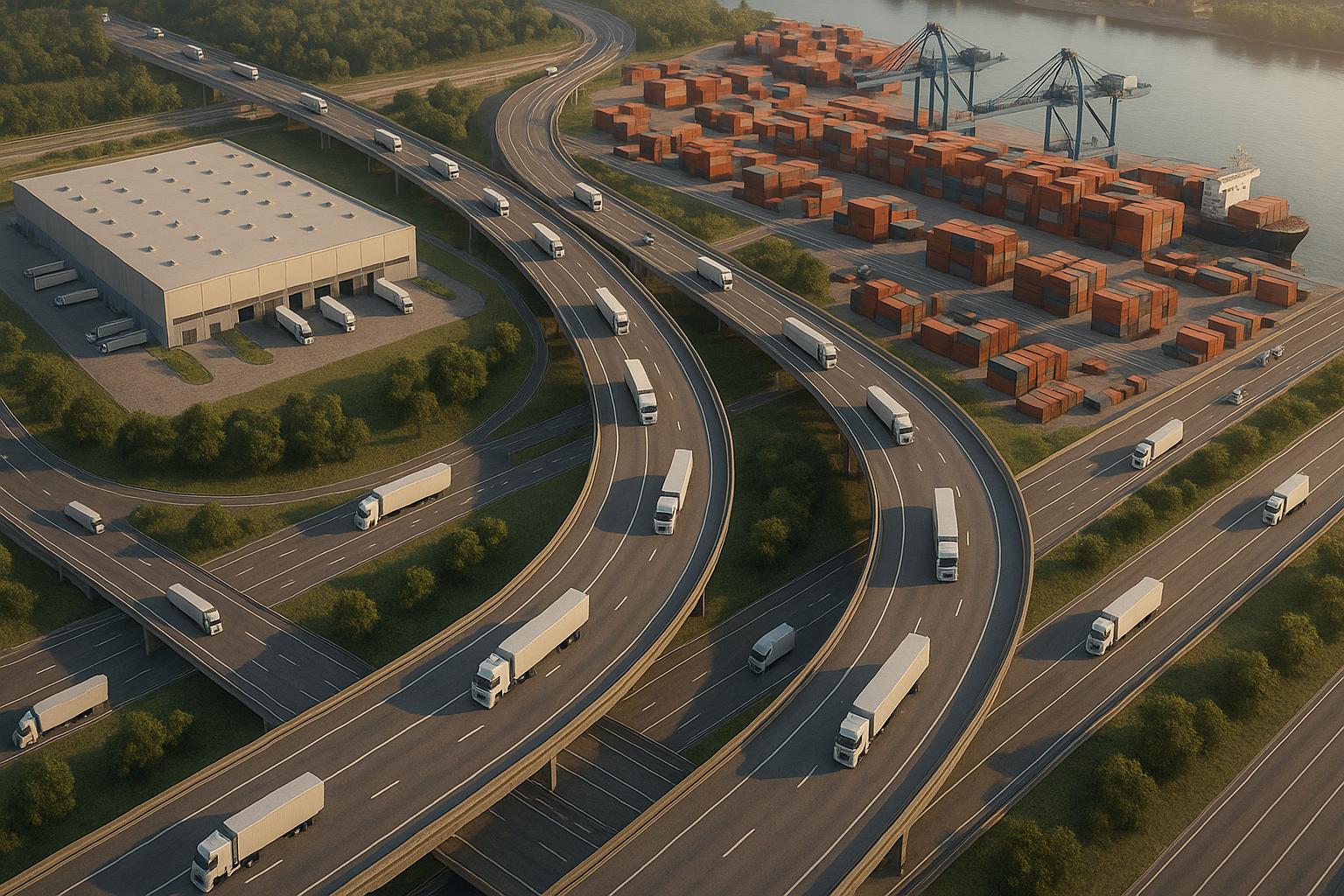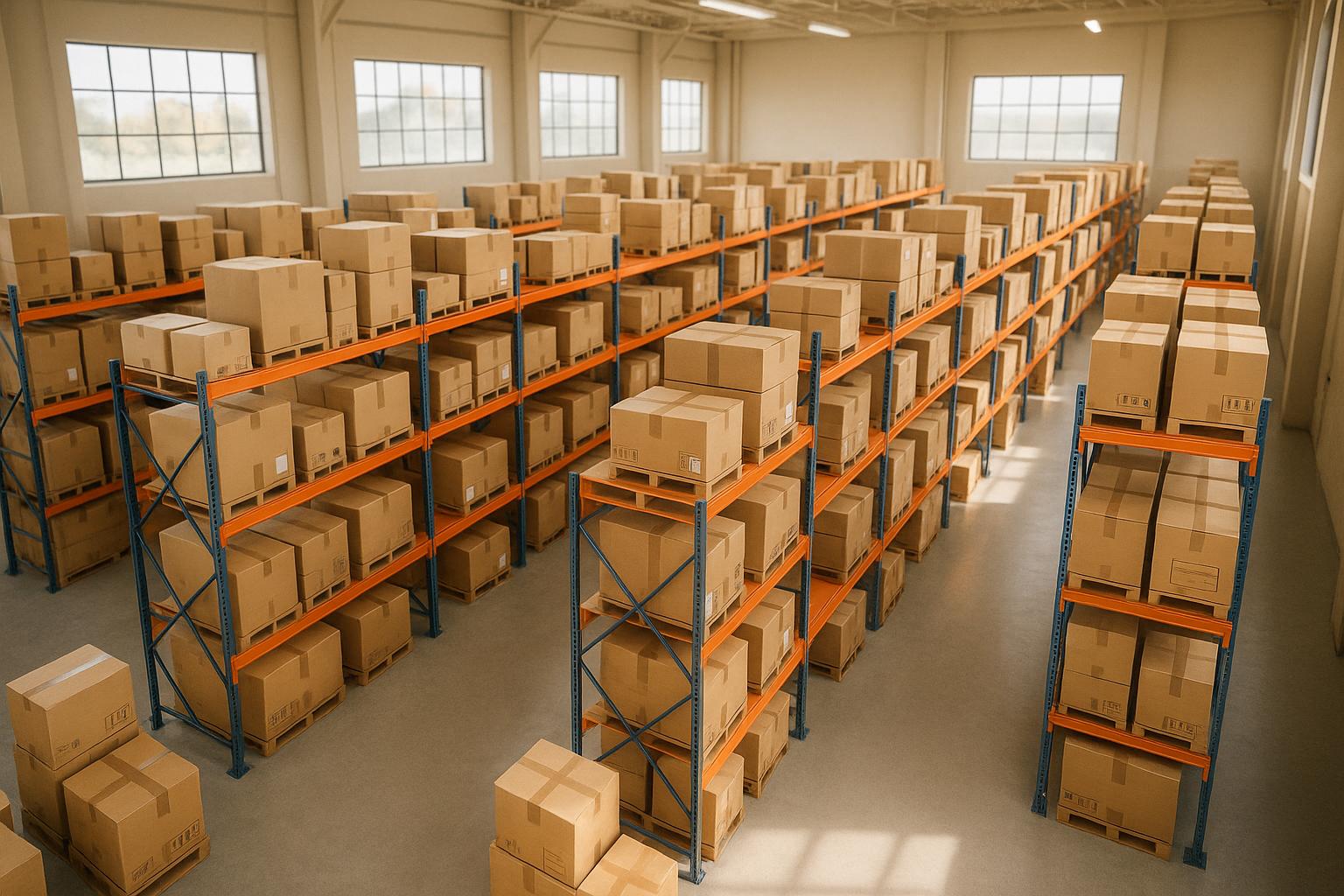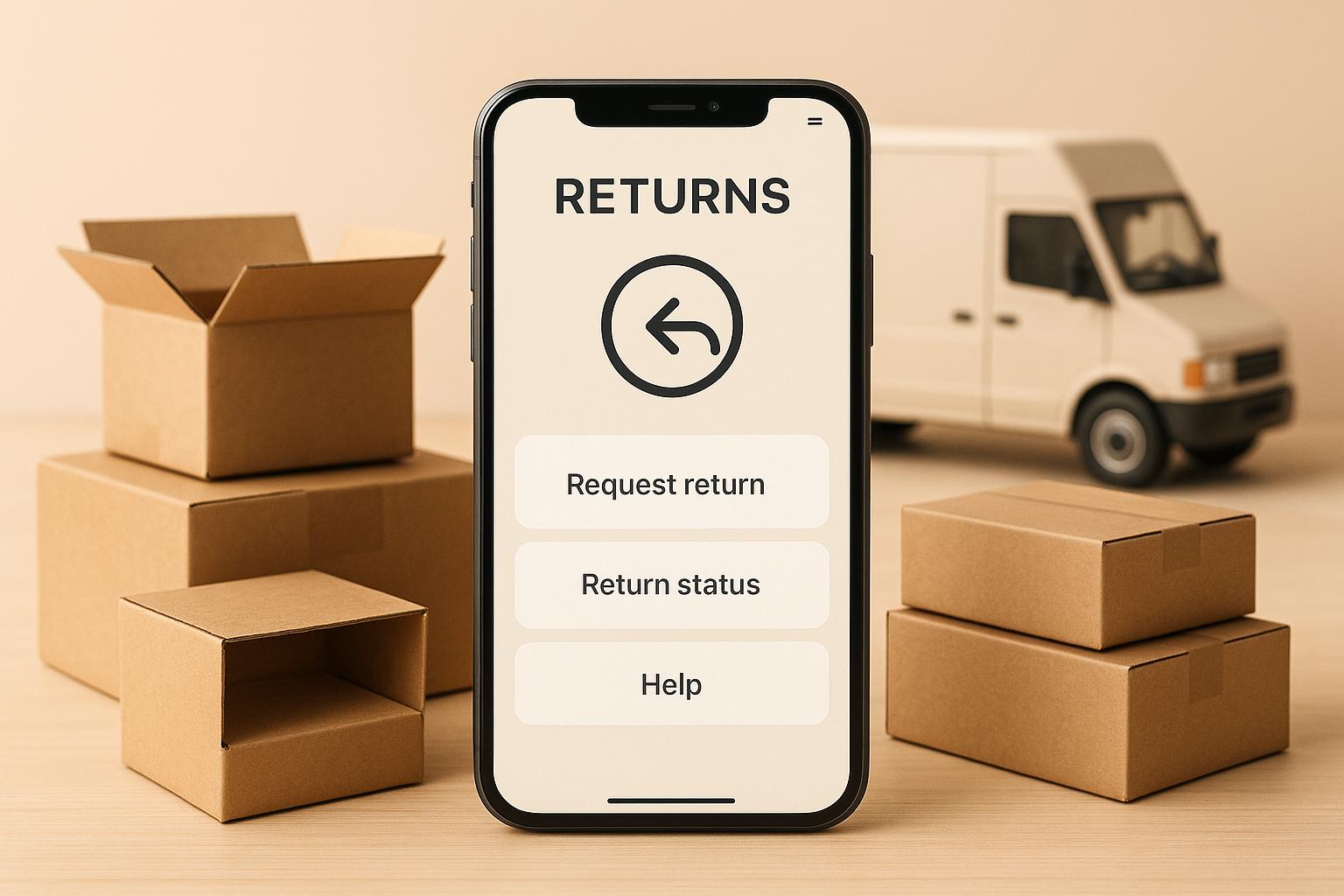Building Resilient Supply Chains with 3PLs

In today’s fast-paced e-commerce landscape, disruptions like natural disasters can wreak havoc on supply chains, leading to delays, lost sales, and damaged customer trust. Partnering with third-party logistics (3PL) providers is a smart way to strengthen supply chain resilience. Here's how 3PLs help businesses stay operational during crises:
- Disaster Preparedness: 3PLs create contingency plans, spread inventory across multiple locations, and maintain strong carrier relationships to ensure smooth operations even during emergencies.
- Real-Time Visibility: Advanced tracking tools and predictive analytics help monitor shipments, anticipate disruptions, and reroute deliveries proactively.
- Infrastructure & Training: Equipped facilities and trained staff ensure businesses can handle emergencies, from severe weather to power outages.
- Flexible Transportation: Diverse carrier networks and dynamic routing options keep deliveries moving despite roadblocks.
The New Normal: Building Resilient Supply Chains in a World of Constant Disruption | Beyond The Box
Disaster Preparedness Strategies with 3PLs
When disasters strike, hoping for the best won’t cut it. Smart e-commerce brands team up with their 3PL partners to craft strategies that keep operations steady, even in the face of disruption. These plans focus on three essential pillars: creating detailed business continuity plans, leveraging cutting-edge visibility tools, and equipping both infrastructure and staff to handle emergencies. Let’s break down how these strategies combine risk management, technology, and readiness to safeguard your supply chain.
Creating a Business Continuity Plan
A business continuity plan acts as your operational playbook during a disaster. It lays out step-by-step actions to tackle disruptions, assigns responsibilities, and ensures products keep moving to customers.
The cornerstone of a strong continuity plan is risk analysis. This involves identifying the disasters most likely to affect your supply chain and assessing their potential impact. For instance, if your primary warehouse is in an area prone to tornadoes, your plan should include protocols for severe weather. Similarly, companies relying on West Coast ports must prepare for earthquakes and wildfires.
At the heart of this process is contingency planning. This means identifying alternative suppliers, backup warehouses, and secondary transportation routes. A well-prepared 3PL should have relationships with multiple carriers and prearranged agreements for emergency capacity. For example, when Hurricane Ida disrupted major highways in Louisiana in August 2021, businesses with robust contingency plans quickly shifted to rail or alternative trucking routes, minimizing delays while others struggled.
Clear emergency response procedures are also crucial. Everyone involved must understand their role during a crisis, from activating backup facilities to communicating with customers. These procedures should define decision-making authority, escalation protocols, and emergency communication methods. Including emergency budgets and insurance details ensures swift action when time is critical.
Using Supply Chain Visibility Tools
Real-time tracking technology provides a clear view of your inventory's location and movement, which becomes invaluable during severe weather. This visibility allows you to pinpoint shipments at risk and notify customers about potential delays before they escalate.
Advanced tools go a step further with predictive analytics, which forecast disruptions before they occur. These systems monitor variables like weather, traffic, and carrier performance, offering proactive solutions. For instance, if a storm is heading toward a key distribution center, predictive systems can suggest rerouting shipments to avoid delays.
Integrated communication platforms enhance coordination during emergencies. Automated alerts keep teams informed about shipment delays, low inventory levels, or the need for alternative routes. This prevents confusion and ensures swift responses, avoiding unnecessary complications.
Centralized dashboards consolidate all this data, flagging unusual situations that need immediate attention. During Hurricane Harvey in 2017, businesses with integrated visibility platforms could track affected facilities, monitor diverted shipments in real time, and coordinate their responses seamlessly. By partnering with a 3PL equipped with such technology, you can turn insights into action when it matters most.
Preparing Infrastructure and Staff
Disaster preparedness also means fortifying your infrastructure and training your team. Facilities need to be equipped to withstand potential threats. For example, warehouses in flood-prone areas should have elevated storage systems and waterproof barriers, while those in earthquake zones require reinforced racks and backup power supplies.
Emergency logistics training is essential for ensuring staff can adapt when normal procedures fail. This training should cover everything from safe evacuations to operating backup systems and communicating with emergency services. Regular drills help employees stay sharp and ready.
Backup systems and emergency supplies are critical for maintaining operations during disruptions. These include backup generators, redundant internet connections, first aid kits, and communication tools. During the Texas freeze in February 2021, warehouses with backup generators were able to keep running, while others relying solely on the grid were forced to shut down for days.
Cross-training programs are another key preparation measure. By training multiple team members to handle critical roles, you avoid relying on a single person. If a warehouse manager is unavailable during an emergency, someone else must be ready to step in, coordinate operations, and make decisions.
Finally, documentation and record keeping should be disaster-proof. Emergency contact lists, facility layouts, and key procedures should exist in both digital and physical formats. Waterproof containers protect paper records, while cloud-based backups ensure digital access from anywhere.
Core 3PL Capabilities for Supply Chain Resilience
When unexpected events disrupt operations, the strength of your supply chain often hinges on the expertise of your 3PL partner. Their specialized services are the foundation of a resilient supply chain, ensuring stability and continuity when challenges arise. Let’s explore the key capabilities that help fortify supply chains against disruptions.
Inventory Distribution and Safety Stock
Spreading inventory across multiple locations is one of the most effective ways to guard against disruptions. Reliable 3PL providers strategically position stock in warehouses across different regions, ensuring that localized issues - like natural disasters - don’t wipe out your entire supply. By placing inventory closer to customers and assessing regional risks, they minimize potential delays.
Accurate demand forecasting, combined with risk evaluations, helps 3PLs determine the right amount of safety stock to keep on hand. For high-risk items, they often maintain extra reserves to further mitigate shortages.
Dynamic inventory allocation is another tool in the resilience toolkit. By shifting stock between facilities based on real-time conditions, 3PLs can adapt quickly to changing circumstances. They also use inventory pooling strategies, treating distributed stock as a shared, flexible resource. Together, these methods ensure service levels remain steady - even during major disruptions.
Transportation Flexibility and Route Changes
Having a robust inventory strategy is just one part of the equation. Flexible transportation options are equally vital during emergencies. Top-tier 3PLs build relationships with a wide network of carriers, spanning trucking, rail, air, and ocean freight. This diversity ensures that if one mode of transport is disrupted, others can step in to keep deliveries on track.
Real-time routing tools allow 3PLs to identify the best shipment paths by factoring in current conditions like weather, traffic, or carrier availability. This adaptability minimizes delays when unexpected events occur.
To reduce dependency on any single carrier, 3PLs prioritize diversification. They also implement strategies like load consolidation and splitting, which improve shipping efficiency while lowering risks. These practices help ensure orders reach customers, even when the supply chain faces significant pressure.
Regulatory Compliance and Cross-Border Operations
Navigating regulations is another critical component of supply chain resilience. Skilled 3PLs handle customs and trade processes with precision, using streamlined documentation and preapproved procedures to avoid delays at borders.
When emergency regulations come into play, adaptability becomes essential. Many 3PLs have demonstrated their ability to quickly adjust operations to align with new guidelines, maintaining both safety and efficiency without missing a beat.
Digital documentation plays a key role here, ensuring that critical paperwork remains accessible during disruptions. Cross-border contingency planning - such as creating alternative routing strategies and fostering strong relationships with carriers - further strengthens the ability to maintain trade flow when standard routes are compromised. This level of regulatory agility helps keep goods moving and reinforces the reliability of the supply chain.
These core capabilities work together to create a resilient supply chain, enabling your business to continue delivering for customers, no matter the challenges ahead.
sbb-itb-eafa320
Technology and Infrastructure for Resilient Operations
When it comes to disaster preparedness, having the right technology and infrastructure in place is essential for keeping operations steady. Advanced tools and systems play a key role in enabling fast and flexible responses during disruptions, ensuring businesses can adapt quickly to unexpected challenges.
Logistics Technology Systems
Modern logistics rely heavily on technology to stay agile. Warehouse Management Systems (WMS) help track inventory in real-time, making it easier to reallocate stock when needed. Transportation Management Systems (TMS) take it a step further by optimizing routes and selecting carriers based on live data, such as weather conditions, traffic patterns, and available capacity. Meanwhile, Enterprise Resource Planning (ERP) platforms bring everything together, integrating both internal and external data - like weather updates and traffic reports - to alert managers when production or shipping plans need adjustments. These systems can even automate responses to reduce delays, making decision-making faster and operations more flexible.
Digital Tools for Quick Decision-Making
Digital tools are transforming how managers respond to disruptions. Advanced GPS tracking now provides more than just a shipment's location - it delivers detailed information about shipment conditions. Automated alerts monitor streams of data, from weather reports to traffic congestion, offering early warnings when issues arise. Predictive analytics, powered by historical data and machine learning, anticipate demand and flag potential disruptions before they happen. All of this comes together on real-time dashboards, which consolidate the data into a single view, giving managers the ability to assess situations and act quickly.
Scalable Infrastructure and Warehouse Networks
Technology is only as good as the infrastructure supporting it. A strong, adaptable network of warehouses ensures that insights from digital tools translate into action. Strategically placed warehouses reduce the risk of widespread disruptions, while flexible facility designs allow for quick adjustments - whether it’s handling different types of products or managing a sudden spike in demand. Backup systems, like alternative power sources and communication channels, keep operations running smoothly even when things go wrong. On the tech side, cloud-based infrastructure provides scalable computing power when needed, and cross-docking capabilities enable faster product movement, ensuring supply chains remain resilient under pressure.
JIT Transportation's Disaster Preparedness Methods

As discussed earlier, resilient supply chains rely heavily on tailored, tech-driven strategies - an approach that defines JIT Transportation’s methods. When natural disasters disrupt operations, having a logistics partner built to withstand such challenges can make a critical difference. JIT Transportation has developed specific disaster preparedness strategies, offering customized solutions to ensure supply chains keep moving. Let’s dive into how they stand out in this space.
Custom 3PL Solutions for Supply Chain Resilience
JIT Transportation understands that no two businesses face the same risks. That’s why their 3PL solutions are tailored to address the unique challenges within each client’s supply chain, avoiding cookie-cutter approaches.
Their transportation services are the backbone of their resilience strategy. They offer a range of options like local delivery, full truckload services, and specialized white glove handling for fragile or high-value items. Their pick-and-pack operations can quickly prioritize emergency shipments, while kitting and assembly services help maintain inventory flow during disruptions.
In times of crisis, their value-added services become indispensable. For example, testing and revision upgrades ensure consistent product quality under pressure. Vendor-managed inventory (VMI) keeps stock levels balanced across multiple locations, and their returns management (RMA) systems streamline reverse logistics, preventing inventory pile-ups during recovery efforts.
Nationwide Network and Technology Platform
In addition to customized services, JIT Transportation leverages its extensive nationwide network and advanced technology to maintain operations during disruptions. Their network includes a broad carrier base and strategically located warehouses across the U.S., allowing them to scale operations and ensure timely deliveries even when specific regions are affected by disasters.
By placing warehouses in diverse geographic areas, JIT Transportation can seamlessly shift operations to unaffected locations when severe weather or other emergencies strike. This geographic spread is supported by scalable infrastructure, enabling them to handle sudden spikes in demand, reroute shipments, or accelerate delivery schedules as needed.
Their technology platform integrates with client ERP systems, offering real-time visibility into inventory, shipment statuses, and potential risks. This transparency empowers businesses to make informed, proactive decisions during challenging times. Additionally, services like pool distribution and consolidation help maximize transportation efficiency by optimizing resource use.
Risk Assessment and Business Continuity Focus
JIT Transportation takes a proactive approach to identifying vulnerabilities in their clients’ supply chains. They analyze factors like supplier concentration, transportation route dependencies, and seasonal demand fluctuations to uncover potential weak points.
To enhance business continuity, they create customized plans for each client. These plans include protocols for redistributing inventory, arranging alternative transportation, and maintaining clear communication with stakeholders during disruptions. High-value products are given extra care when necessary.
What sets JIT Transportation apart is their commitment to preparation. They regularly conduct disaster simulations to test and refine these plans, ensuring both their team and their clients are ready to respond effectively when real challenges arise.
Conclusion: Building Stronger Supply Chains with 3PL Partners
Resilient supply chains are the backbone of business success, especially in times of uncertainty. They ensure customer satisfaction while driving sustained growth. The global 3PL market, projected to grow from $1.29 trillion in 2024 to $1.68 trillion by 2029, highlights the rising importance of these partnerships in strengthening supply chain resilience. By working with 3PL providers, businesses can turn challenges into opportunities for strategic advantage.
Take JIT Transportation, for example. With a diversified network, cutting-edge technology, and proactive risk management, they achieve impressive order accuracy rates of nearly 99.95%. This approach transforms potential vulnerabilities into strengths that set businesses apart from competitors.
Collaborating with skilled 3PL providers offers access to scalable infrastructure, multi-modal transportation options, and strategically located warehouses. These resources enable agile inventory management and flexible logistics solutions that adapt to changing demands.
Additionally, 3PLs bring the power of economies of scale to the table. They negotiate better shipping rates and optimize routes, converting fixed logistics costs into variable ones. This allows businesses to allocate more resources to their core activities while keeping logistics efficient and cost-effective.
Investments in advanced technologies - like warehouse management systems (WMS), transportation management systems (TMS), and AI-driven analytics - give 3PLs the tools for real-time decision-making and robust disaster recovery plans. These systems not only help restore operations during disruptions but also continuously improve processes, paving the way for future growth.
For e-commerce brands aiming for long-term success and exceptional customer experiences, partnering with a full-service 3PL is more than a logistics solution. It’s a strategic move toward scalability, continuity, and staying competitive in an ever-evolving marketplace.
FAQs
How do 3PL providers help e-commerce businesses maintain supply chain resilience during natural disasters?
3PL providers are essential in maintaining supply chain stability during natural disasters. Their ability to respond swiftly to disruptions helps keep operations on track. By tapping into their expertise, they can set up alternative shipping routes, spread inventory across various locations, and work with a diverse network of suppliers - reducing the risk of relying on a single source.
These providers also keep a close eye on weather patterns and global news in real-time, allowing them to anticipate disruptions and act ahead of time. With the support of scalable infrastructure and cutting-edge logistics technology, 3PLs deliver fast and dependable solutions, helping businesses bounce back and stay operational during tough situations.
How does technology improve supply chain visibility and flexibility in 3PL operations?
Technology plays a key role in improving supply chain visibility and adaptability within 3PL operations. Tools like real-time tracking, data analytics, and automated systems offer a clear view of inventory levels, shipping progress, and potential issues. With these insights, businesses can react swiftly to unexpected disruptions, ensuring smoother workflows and happier customers.
Technologies such as control towers and predictive analytics help 3PLs fine-tune routing, minimize delays, and maintain tighter control over supply chain activities. This level of flexibility strengthens supply chains, allowing them to navigate challenges like natural disasters or sudden shifts in market demand with greater ease.
What steps can businesses take to prepare their infrastructure and staff for supply chain disruptions?
To stay prepared for supply chain disruptions, businesses should prioritize improving supply chain visibility, broadening their supplier base, and establishing solid risk management plans. Regularly training staff and conducting emergency response drills are also key steps to ensure teams can respond effectively when unexpected challenges arise.
Using advanced tools like real-time tracking systems and analytics can help spot potential risks early, allowing for quicker action to maintain operations. On top of that, creating redundancies - such as having backup suppliers or alternative shipping routes - adds an extra layer of protection against interruptions. By focusing on these strategies, businesses can build a more resilient supply chain that keeps both operations and teams prepared for the unexpected.
Related Blog Posts
Related Articles

10 Common Supply Chain Risks and How 3PLs Solve Them

9 Ways 3PLs Solve DTC Scalability Problems

